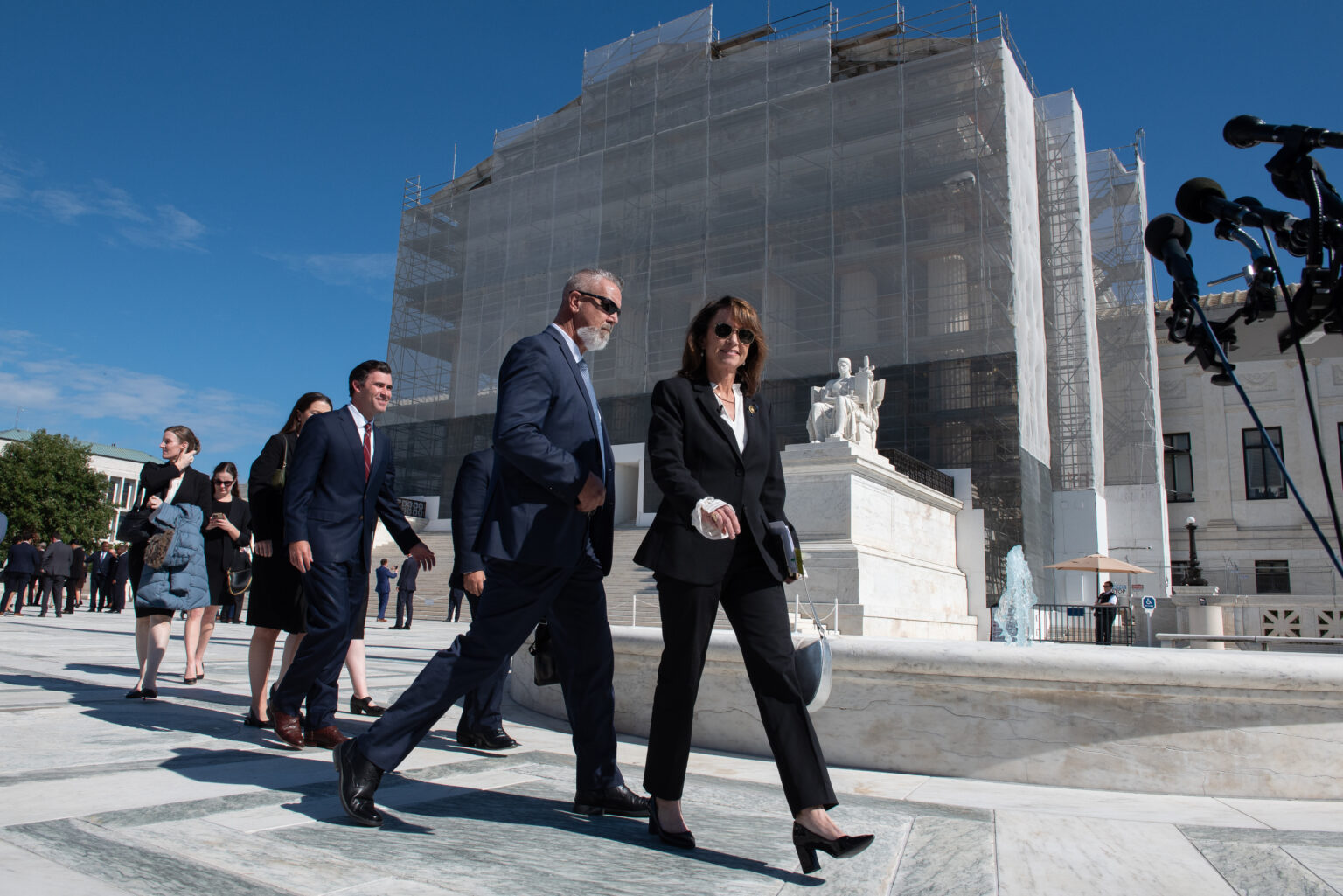Some Republicans across the south are preparing to redraw their congressional maps to boot Democrats out of office — if the Supreme Court issues a ruling on a case gutting the Voting Rights Act in time for the midterms.
While such a decision is no sure thing, some states are nonetheless planning for the scenario. The potential scramble to redraw could completely reshape the midterms, and Democrats are already sounding the alarm. One Democratic group forecasted an ambitious 19 seat pickup for the GOP by dismantling majority Black and other majority-minority districts currently protected by the VRA, though that would be an extreme scenario where every possible state redistricts.
The Supreme Court’s looming ruling centers around Section 2 of the VRA, which has long been implemented by creating majority-minority districts. Those districts are almost entirely represented by Democrats, something that Republicans have long claimed gives the party an unfair advantage.
Were that portion of the VRA to be weakened or entirely invalidated by the court, it could open up the floodgates for redistricting, if not in time for 2026 than certainly for 2028.
In South Carolina, for example, top Republicans in the state are itching to draw out the state’s lone Democrat: Rep. Jim Clyburn.
“If we could have a clean sweep, I would love that,” South Carolina Lt. Gov. Pamela Evette, who is running for governor, told POLITICO.
Rep. Ralph Norman (R-S.C.) — also running for governor — is similarly hoping to eliminate Clyburn’s seat through redistricting, and he doesn’t see a reason to wait for a ruling.
“The White House should apply pressure to the weak-kneed South Carolina Legislature and the governor just as it has done in non-Section 2 states,” Norman wrote in a recent op-ed.
Democrats are pushing back, and they say recent comments from the GOP should influence the justices as they decide on the case.
“Many states across the South are already licking their chops to try and prepare to racially gerrymander maps as quickly as possible,” said John Bisognano, president of the National Democratic Redistricting Committee. “It is clear that there is a consistent and dramatic need for laws to be in place to enforce the Fourteenth Amendment and ensure that the racial gerrymandering or racial discrimination at large is not permitted in this country.”
In Florida, Gov. Ron DeSantis has repeatedly asserted that if the Supreme Court rules that states cannot consider race when drawing district lines, it will “necessitate new congressional redistricting” in the red state. He has previously suggested that seats in South Florida — where several districts have a significant number of Black and Hispanic voters — would need to be changed.
DeSantis, who under the state constitution has veto power over congressional maps, previously muscled into law changes that resulted in Republicans gaining a 20-8 edge. Florida Republican legislative leaders have suggested they are open to mid-decade redistricting and this summer state House Speaker Daniel Perez even signed off on creating a committee to consider changes.
Since then, however, there’s been little movement. Perez declined to comment earlier this month when directly asked if lawmakers are waiting for the high court to rule. Florida’s annual legislative session is scheduled to start in January. Legislators could have enough time to act ahead of the 2026 midterm elections since Florida’s primary isn’t until late August.
One caveat, however, is that Florida’s constitution prohibits drawing districts for partisan gain, and any major changes could trigger legal challenges. The state Supreme Court, where a majority was appointed by DeSantis, earlier this year upheld the current congressional map, a boon for the one-time presidential candidate.
In Louisiana — the state that is central to the case challenging the Voting Rights Act — Gov. Jeff Landry has called a special session to adjust the state’s primary date to give the most possible time for a redraw.
During oral arguments, the high court’s conservative justices seemed poised to weaken the law. Justices Clarence Thomas, Samuel Alito and Neil Gorsuch appeared inclined to bar virtually any use of race in redistricting, suggesting that race-conscious district lines might be unconstitutional.
But even if they ultimately do strike down portions of the law, lawmakers will face a tight timeline to get new maps passed before the midterms. If a ruling drags into the summer, when some of the highest-profile cases are often decided, it could foreclose many states from redrawing lines.
Because the entire case is a rehearing from last term, some Republicans are optimistic that the court could rule sooner than later, setting off a rush to redistrict. If that’s not the case, there are still options for red state lawmakers looking to redistrict after the ruling comes down.
Moving back primaries, said one top Republican strategist granted anonymity to discuss strategy, would be the best way for states to redraw in time for the midterms. But it would take a lot of strong-arming to get lawmakers to alter their own election timelines, and the strategist warned that such a scenario is not very likely.
The White House has ramped up pressure on lawmakers in red states without Voting Rights Act limitations to redraw their maps, going as far as threatening a primary to New Hampshire Gov. Kelly Ayotte. But so far, according to one person familiar with the strategy, the White House has not started talking with lawmakers in states with VRA-protected seats.
But if the pressure in other states is any indication, if there is an opportunity to redraw, Trump and the White House expect lawmakers to take up the issue.
Already, the GOP has picked up seven seats across three states: Texas, Missouri and North Carolina.
Gary Fineout and Alec Hernández contributed to this report.
Read the full article here


